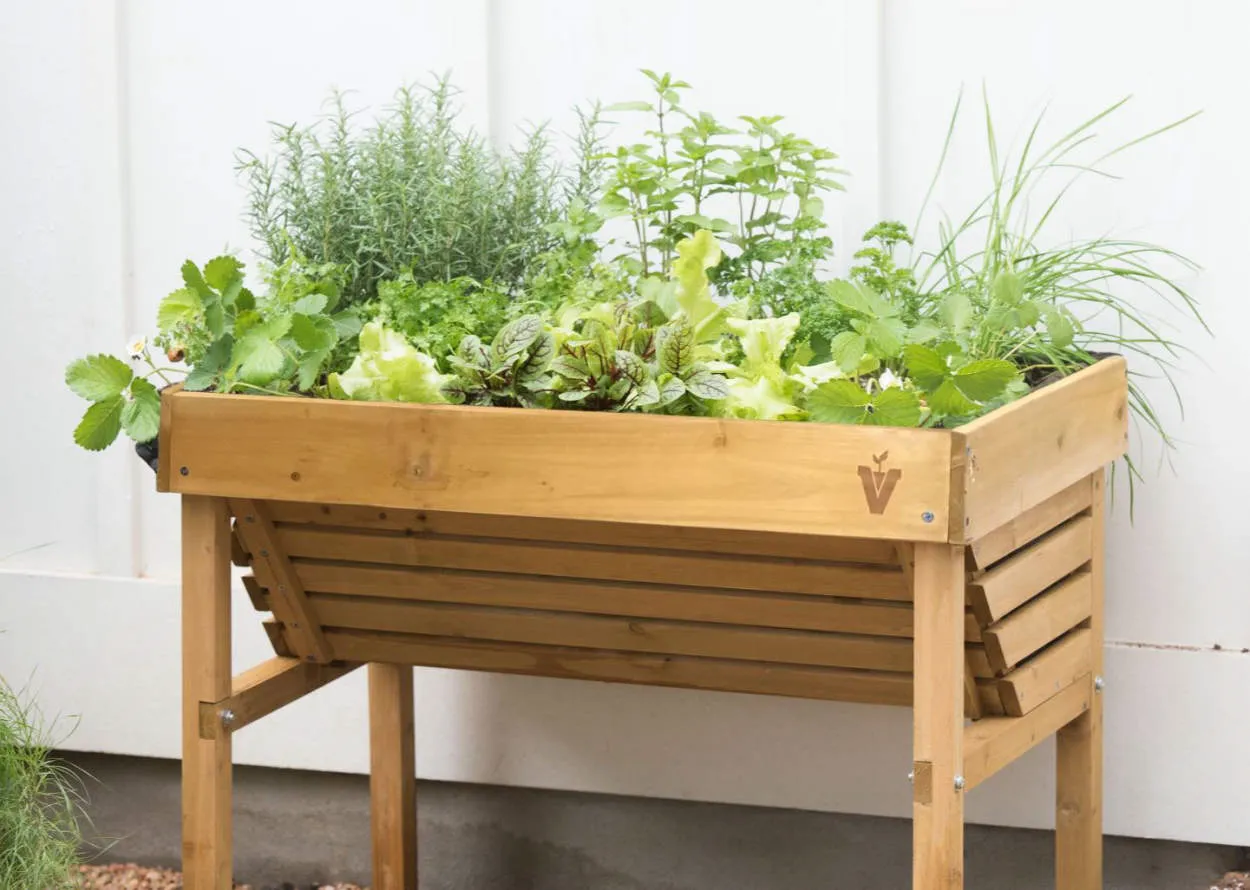Looking to add fresh flavors to your dishes? A kitchen herb garden is the answer. Growing your own herbs at home not only provides easy access to a variety of aromatic flavors, but it also adds a touch of green to your kitchen. Discover the joy of fresh herbs with our guide to creating a thriving kitchen herb garden.
Starting a Kitchen Herb Garden
Are you tired of buying herbs from the store every time you need them for cooking? Why not start your very own kitchen herb garden? Not only will it provide you with fresh and flavorful herbs at your fingertips, but it will also add a touch of greenery to your kitchen.
Choosing the Right Herbs
The first step in starting your kitchen herb garden is choosing the right herbs. Consider the herbs you use most frequently in your cooking. Basil, parsley, rosemary, thyme, and mint are popular choices. Select herbs that thrive indoors and don’t require too much sunlight.
Getting the Right Supplies
Next, gather the necessary supplies. You will need pots or containers with good drainage, potting soil, and herb seeds or seedlings. Ensure that the containers are large enough for the herbs to grow and have drainage holes to avoid waterlogged soil.
Planting and Caring for Your Herbs
Fill the pots with potting soil and plant the seeds or seedlings according to the instructions on the packet. Place the pots in a sunny spot near a window, ensuring they receive at least 6 hours of sunlight per day. Water the herbs regularly, but be careful not to overwater them.
Trim your herbs regularly to encourage growth and prevent them from becoming leggy or woody. Pinching off the top leaves will promote bushier growth. Remember to fertilize your herbs with a balanced organic fertilizer every few weeks to keep them healthy.
Harvesting and Using Your Herbs
Once your herbs have matured, you can start harvesting them. Cut the leaves as needed, leaving a portion of the plant intact for continued growth. Freshly harvested herbs will add incredible flavors to your culinary creations.
Whether you use them in sauces, soups, salads, or teas, having a kitchen herb garden will elevate your dishes to a whole new level. Plus, you can proudly say that you grew them yourself!
Best Herbs for Indoor Growing
When it comes to creating a kitchen herb garden, selecting the right herbs for indoor growing is essential. Not all herbs thrive in an indoor environment, so it’s important to choose varieties that are well-suited for indoor gardening. Here are some of the best herbs to consider:
1. Basil
Basil is a versatile herb that adds a burst of fresh flavor to numerous dishes. It grows well in containers and prefers a sunny spot near a window. Regular pruning will promote bushier growth.
2. Parsley
Parsley is a popular herb that can easily be grown indoors. It requires moderate sunlight and regular watering. The leaves can be harvested as needed and are great for garnishing dishes.
3. Thyme
Thyme is a perennial herb that is known for its aromatic leaves. It does well in containers and thrives in bright light. Thyme is a great addition to soups, stews, and roasted meats.
4. Mint
Mint is a fast-growing herb that is perfect for indoor gardening. It prefers partial shade and regular watering. This refreshing herb is ideal for adding a twist to beverages or desserts.
5. Chives
Chives are easy to grow indoors and are a member of the onion family. They require moderate sunlight and regular watering. Snip the thin green blades to add a mild onion flavor to your dishes.
Remember to provide adequate light, proper drainage, and regular care for your indoor herb garden. By selecting the right herbs and providing the ideal growing conditions, you can enjoy fresh flavors year-round, right from your own kitchen!
Integrating Gardens into Kitchen Design
In recent years, kitchen herb gardens have become increasingly popular among home cooks looking to incorporate freshness and flavor into their culinary creations. Integrating gardens into kitchen design is not only a practical way to have easy access to fresh herbs, but also adds a touch of green and lushness to the overall aesthetic.
One of the most common ways to integrate a kitchen herb garden is by installing a vertical garden or herb wall. This space-saving solution allows herbs to be grown vertically on a wall or mounted on a frame, utilizing unused wall space. Not only does this create a visually stunning feature in the kitchen, but it also ensures that herbs are within arm’s reach when needed for cooking.
Another option is to incorporate a kitchen island or countertop herb garden. This can be achieved by dedicating a portion of the countertop or island to growing herbs. Installing built-in planters or using decorative pots can help maintain the kitchen’s aesthetic while providing a convenient and functional herb garden.
For those with limited space, windowsill herb gardens are a perfect solution. Simply place small pots or containers on a sunny windowsill and let the herbs thrive. This not only adds a pop of color to the kitchen but also allows for easy monitoring and care of the herbs.
In addition to their practicality, kitchen herb gardens contribute to sustainability by reducing the need for store-bought herbs packaged in plastic containers. Growing your own herbs at home not only ensures freshness and quality but also helps minimize waste.
In conclusion, integrating gardens into kitchen design is an innovative way to bring the benefits of nature indoors. Whether by implementing a vertical garden, a countertop herb garden, or a windowsill herb garden, incorporating fresh herbs into the kitchen adds a burst of flavor and visual appeal to any cooking space.
Benefits of Fresh Herbs
When it comes to adding flavors to your dishes, fresh herbs are an absolute game-changer. Not only do they enhance the taste of your food, but they also come with a multitude of health benefits.
1. Nutritional Powerhouses
Fresh herbs are packed with essential vitamins and minerals that are important for overall health. For example, basil contains high levels of vitamin K, which is essential for blood clotting and bone health.
2. Antioxidant-Rich
Many herbs possess antioxidant properties that help fight free radicals in the body. For instance, oregano is rich in antioxidants, including thymol and rosmarinic acid, which have been linked to reducing inflammation and protecting against chronic diseases.
3. Digestive Aid
Herbs like mint and ginger are known for their ability to aid digestion. They can help soothe an upset stomach, relieve indigestion, and even alleviate symptoms of nausea.
4. Flavor without Added Calories
Using fresh herbs in your cooking allows you to add flavor to your dishes without adding extra calories. This is especially beneficial for those watching their weight or looking to eat a healthier diet.
5. Mood Boosters
Certain herbs, such as lavender and chamomile, have calming properties that can help reduce stress and improve mood. Adding them to your kitchen garden can provide you with easy access to these natural mood boosters.
In conclusion, incorporating fresh herbs into your kitchen herb garden not only elevates the taste of your food but also provides numerous health benefits. From their nutritional value to their antioxidant properties, these herbs are a valuable addition to any home cook’s arsenal.
Care and Maintenance Tips
When it comes to creating a kitchen herb garden, it’s important to know how to care for and maintain your plants to ensure a bountiful harvest of fresh flavors. Here are some essential tips to keep in mind:
1. Choose the Right Location
Herbs thrive in a sunny spot, so choose a location near a window or a balcony that receives at least six hours of direct sunlight each day. This will provide the plants with the necessary light they need to grow and develop.
2. Provide Adequate Watering
Herbs prefer slightly moist soil, so keep an eye on the moisture level. Water them regularly, ensuring that the soil is evenly moist but not waterlogged. It’s essential to strike a balance to prevent root rot or dehydration.
3. Ensure Proper Drainage
Good drainage is crucial for the health of your herbs. Make sure that your pots have drainage holes to allow excess water to escape. This will prevent waterlogged soil, which can lead to root problems.
4. Prune Regularly
Regular pruning is key to encourage bushier growth and to prevent leggy, straggly plants. By trimming the top growth regularly, you will not only control the size of the plant but also promote new shoots and enhance the flavor of the harvested leaves.
5. Watch out for Pests
Keep an eye out for common pests like aphids, mealybugs, and whiteflies that can infest herb plants. Inspect your plants regularly and take immediate action at the first signs of infestation. Organic pest control methods such as insecticidal soaps or neem oil sprays can be effective in managing pests.
6. Harvest Correctly
Harvesting your herbs correctly ensures maximum flavor and encourages new growth. Snip off the leaves or sprigs from the top of the plant, just above a leaf node or pair of leaves. Avoid removing more than one-third of the plant at once to allow it to continue growing and thriving.
7. Consider Companion Planting
Companion planting can be beneficial for your kitchen herb garden. Some herbs repel pests while others attract pollinators. For example, planting basil near tomatoes can help repel aphids, while marigolds can attract beneficial insects. Do some research to find the best companion plants for your herb selection.
By following these care and maintenance tips, you’ll be on your way to enjoying a thriving kitchen herb garden that adds fresh and vibrant flavors to your culinary creations.
Conclusion
In conclusion, having a kitchen herb garden is a fantastic way to bring fresh flavors into your home. Not only do you get the convenience of having herbs readily available for cooking, but you also get the satisfaction of growing and nurturing your own plants. With just a small space and some basic gardening skills, anyone can enjoy the benefits of a kitchen herb garden.




